
How Much Should You Spend on Marketing in 2022?
Posted May 2, 2022 | Updated 4 years ago
Budgets. At some point in our lives, we have all tried to create one for one reason or another. But when you’re running a small-to-medium local business, knowing how much you should spend on marketing is imperative.
A good marketing budget tells you where your dollars were spent, creates accountability for your organization, and can allocate marketing expenses to campaigns.
Your marketing budget should cover all the necessary costs to spread the word about your company, product, and/or service. So that would include things like print advertising, promotions, demonstrations, exhibitions, public relations, social media, free product sampling or giveaways, and any costs to cover paid ads, etc.
What is a good marketing budget?
Marketing budgets typically range between 5 and 25% of a company’s current or target annual revenue.
And a straightforward way of determining your ideal marketing budget is to use The Growth Mode technique.
There are three modes: Maintenance, Controlled Growth, & Accelerated Growth.
Depending on what mode your company is in will help determine what your percentage should be. For maintaining your current status, 5-10% is standard. For controlled growth periods it’s 10-15%, and for accelerated growth 15-25% is recommended.
Here are some examples to show how each growth mode works.
Maintenance
Mode
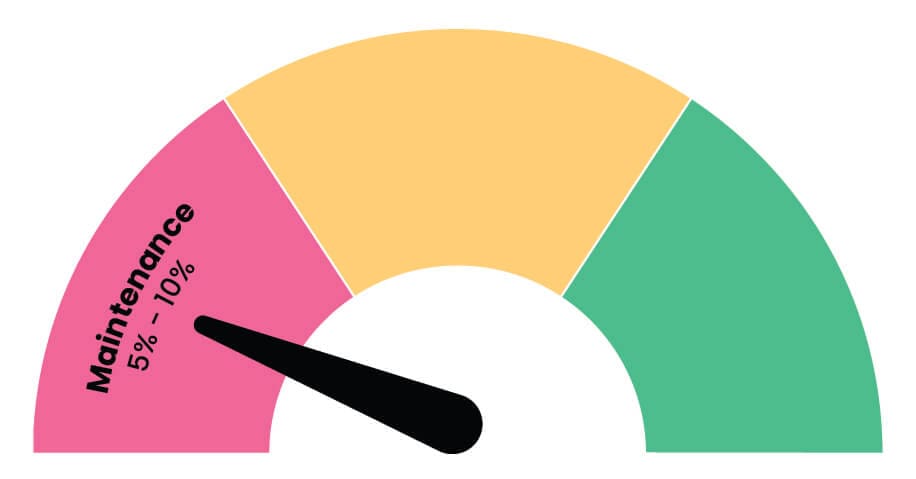
For a company in Maintenance Mode with an annual revenue of $240,000, the marketing budget would be $12,000 at 5%.
Making the monthly marketing budget $1,000.
Controlled Growth
Mode
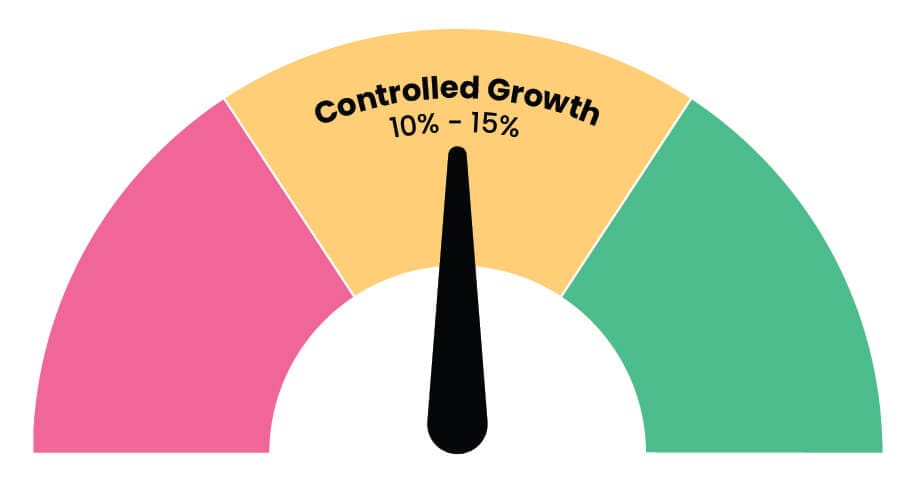
For a company in a Controlled Growth Mode with an annual revenue target of $600,000, the marketing budget would be $60,000 at 10%.
Making the monthly marketing budget $5,000.
Accelerated Growth
Mode
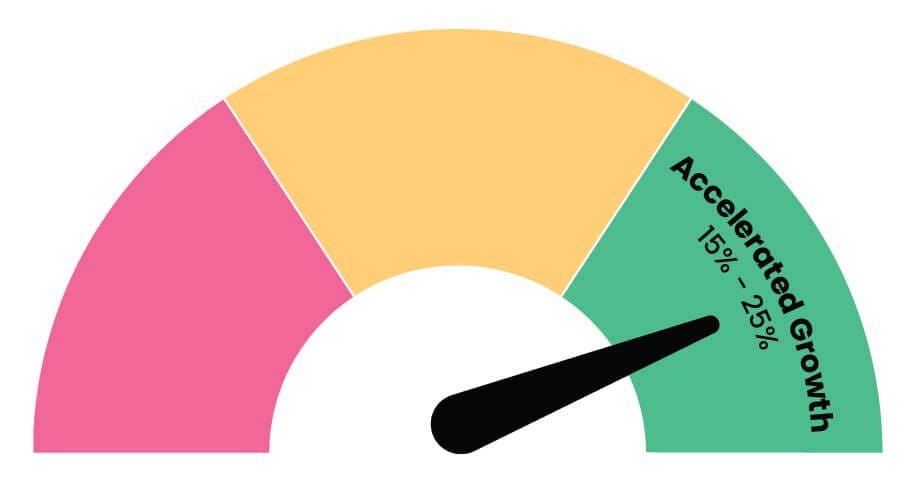
For a company in an Accelerated Growth Mode with an annual revenue target of $1,000,000, the marketing budget would be $150,000 at 15%.
Making the monthly marketing budget $12,500.
For Start-Ups

And finally, for businesses just starting out, or with an annual revenue of $120,000 or less, the minimum recommended marketing budget is $6,000. Or $500 per month.
Creating the Marketing Budget Formula
Simply put, use your current or target annual revenue (TAR) and multiply that by your growth mode percentage (GM%). The resulting number will be your annual marketing spend (AMS). Then you can break it down into monthly or even quarterly spend.
TAR X GM% = AMS
What should I include in my marketing budget?
Every business is different and that makes every marketing budget different. Not every marketing budget consists of the same things, but there are commonalities. Components such as:
- Social Media Marketing
- Expenses of Marketing Activities
- Employee Salaries
- Research
- Training
- Overhead Costs
- Brand Related Expenses
It’s up to you to determine what parts of a marketing campaign are most important to your business. Do your research on what platforms you should invest in. What platforms have given you the best results in the past? Once you know, allocate your budget amongst those priorities accordingly. If you don’t have that intel, check competitors in your industry and see what works for them, but more on that later.
Industry Standards for Marketing Budgets
Every industry has different marketing standards. Things like being B2B vs B2C, what you are actually marketing, and the demographics of who you’re marketing towards can change your business’s standards and where they fall into the Industry’s standards.
Here’s a small breakdown of how B2B vs B2C allocate resources and a guide on more individualized industries:
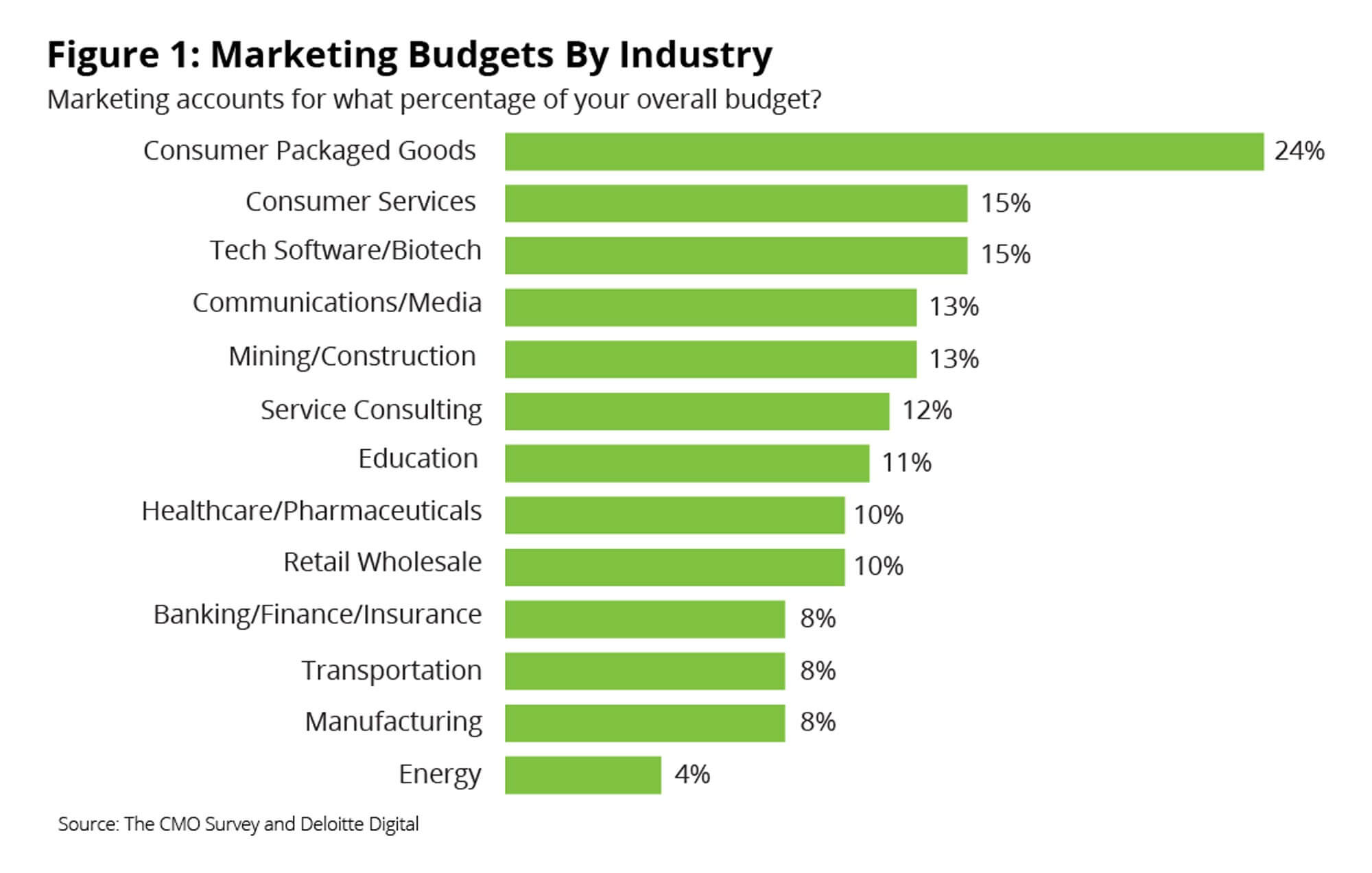
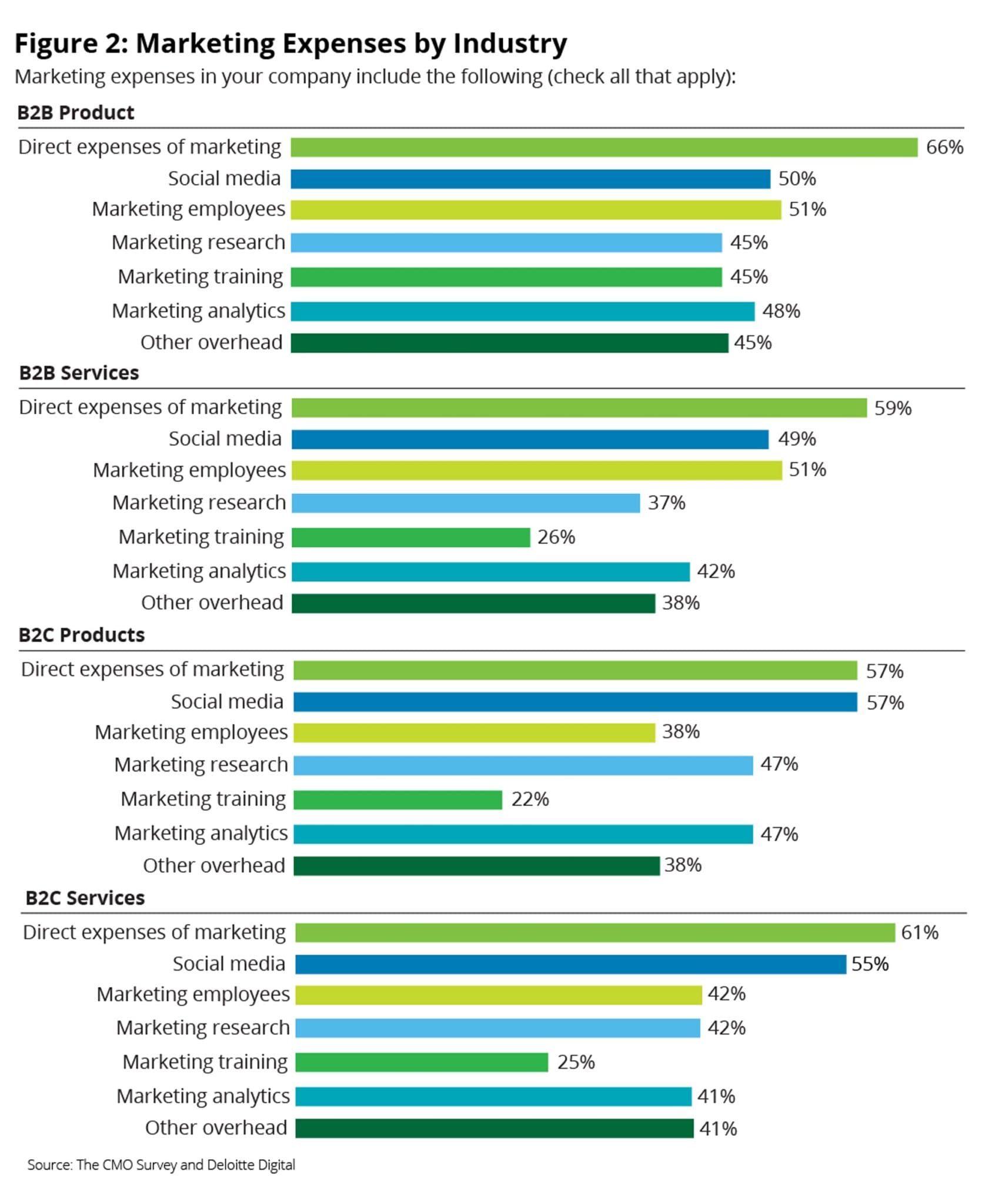
These are great charts if you’re still a little lost on what your industry should prioritize.
Typical ROIs You Can Expect
First Off, What are ROIs? ROI is an acronym for “Return on Investment”, think “You need to spend money to make money”. However, if you’re spending money without anything in return.. Well, we’re sure you can infer that no one wants that.
It can take months to know if your marketing campaigns have a good ROI, or in other words, are profitable. But when you’ve gathered your numbers, a generally good marketing ROI is 5:1*. This ratio means for every $1 you spend on marketing, you’re making $5 in sales. A 10:1 ratio is considered high, but don’t be discouraged if you’re not quite there yet.
ROIs are incredibly important for ensuring your campaigns are creating and driving profit. They can also be used to prove the worth of an experiment with a similar platform.
So how do you find ROI? It’s actually a simple mathematical formula.
(Attributable Sales Growth – Marketing Cost)/ Marketing Cost = ROI
So, if you’ve had $320,000 in sales annually, and spent $16,000 on marketing.
(320,000 – 16,000)/16,000= 1:19 ROI
Basic Marketing Strategies to Help Your Business Grow
Your Budget should correlate with your Marketing Plan, and while you should use data from your industry and reports to help make those allocation choices, here’s a few general suggestions and strategies to get you started:
- Search Engine Optimization (SEO)- This strategy is the seemingly magical process of getting your website on the only page of Google that people look through.
- Email Marketing– With a consistently high ROI, Email marketing gives you bang for your buck if you know how to do it correctly.
- Social Media– Whether you use paid marketing on Social media, or hit all the write hashtags, this method can be cost-effective and give you the opportunity to hone your brand voice and image.
- Non-Digital Advertising Such as Mailing or Print– Did you know that what you touch influences what you buy? Therefore, touching a physical ad influences more than you think!
Conclusion
We hope this helped you smash your fear of your marketing budget! Don’t forget to check our other Blog Posts for more information to grow your business!
